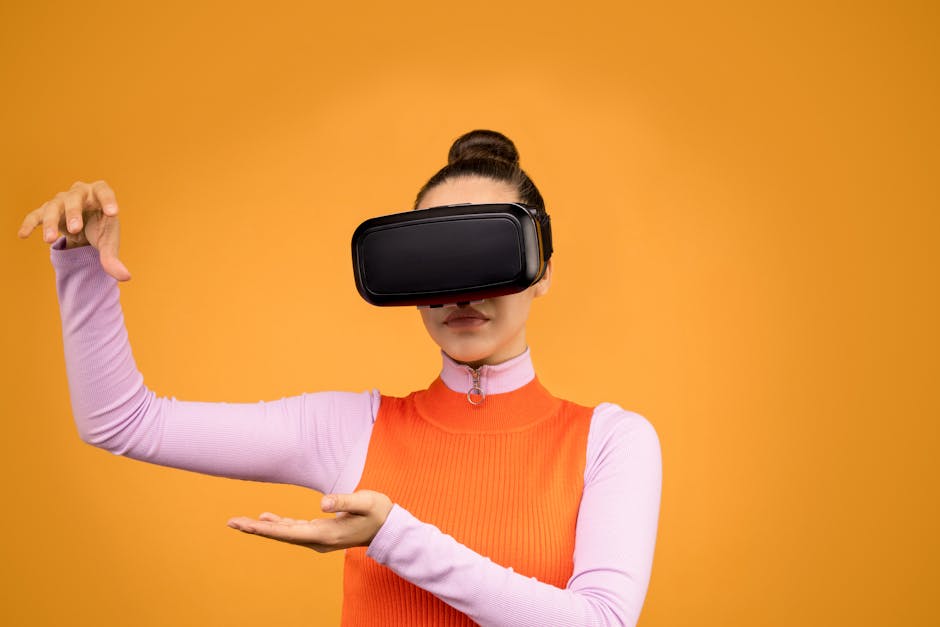
The Sounds of Search: Rethink Your SEO Strategies for 2025
In the rapidly evolving landscape of digital marketing, 2025 brings not just new trends but an entire revolution in how we interact with information. One pivotal area that businesses must adapt to is the rise of audio content and voice search—two elements that are reshaping SEO strategies as we know them. As more users turn to voice-activated devices for information consumption, marketers must rethink their traditional strategies to stay relevant and competitive.
In This Article
- The Shift Toward Voice Search and Audio Content
- Embracing Natural Language Processing (NLP)
- Crafting Conversational Content
- The Role of Audio Content in SEO
- Integrating Sound Design for Enhanced Brand Recognition
- Understanding User Intent through Voice Queries
- Transitioning to a Multi-Modal Search World
- User Engagement through Personalized Audio Experiences
- Voice Search and Local SEO: A Dynamic Duo
- Navigating the Challenges of AI Transparency in SEO
- Final Thoughts
- Meta Description
The Shift Toward Voice Search and Audio Content
Imagine walking into your home and simply asking your virtual assistant to provide you with the latest news or the best restaurant nearby. This scenario is no longer a futuristic dream; it’s happening now, and it’s massively changing the way we search for information. According to data from the search marketing industry, approximately 50% of all searches are expected to be voice-based by 2025. As we approach this tipping point, digital marketers need to recognize the implications for SEO strategies.
Voice search offers a more natural, conversational method for users to find information, which means that SEO strategies must adapt to this shift in user behavior. In contrast to traditional text-based searches that lean on keywords, voice search often involves complete sentences and questions. Tailoring your content to address these long-tail keywords and queries can enhance your visibility in voice search results.
Embracing Natural Language Processing (NLP)
To make your SEO strategies compatible with voice search, adopting Natural Language Processing (NLP) will be critical. NLP helps analysis of the way people phrase their queries, capturing the nuances of human speech. Brands that integrate NLP can provide more contextual and relevant answers to voice search inquiries, which enhances user experience and increases search rankings.
Furthermore, voice search queries tend to be more focused on immediate needs—questions like "What's the best coffee shop near me?" or "How late does the grocery store stay open?" This immediacy calls for marketers to optimize their local SEO strategies accordingly.
Crafting Conversational Content
Creating content that mimics human dialogue can take your SEO game to the next level. Consider using a conversational tone in your blog posts and web pages. Aim for short paragraphs, clear headings, and direct answers to FAQs. This approach not only makes your content more appealing to users but also helps in capturing snippets that can feature in voice search results.
Example: Optimizing for Featured Snippets
When users search with voice commands, they are often looking for short answers that can be read aloud. You can optimize your content for featured snippets by formatting it in a way that directly answers commonly asked questions. For instance, if you have a section that explains "How does voice search work?" consider structuring it in a Q&A format that captures the essentials within a few sentences. This not only enhances user engagement but also positions you to be the 'answer' in voice search queries.
The Role of Audio Content in SEO
As the popularity of podcasts rises, leveraging audio content can amplify your digital marketing efforts and provide a unique space to engage with your audience. Audio formats allow for storytelling, which can be dynamic, emotional, and informative all at once. Brands that can tap into this mode of content delivery are not just enhancing their SEO; they are also fostering deeper connections with their audience.
Creating SEO-friendly Audio Content

Ensure that your audio content is optimized for search as well. Transcribing your podcasts or audio files into written content can improve your chances of being discovered through traditional search engines. This practice makes your content accessible to different audiences and helps in keyword indexing. Incorporating relevant keywords naturally into the transcriptions is a strategic move that pays off.
Integrating Sound Design for Enhanced Brand Recognition

With the rise of audio branding techniques, sound design is becoming a significant player in digital marketing strategies. Sounds and audio signatures help create memorable experiences that users will associate with your brand. Embedding audio signals within your website can elevate user engagement and also play a role in SEO.
Soundwave Optimization

"Soundwave optimization" is a term worth knowing. This technique is about creating a unique audio identity for your brand that resonates with users, making them more likely to recognize and remember you amidst the digital noise. It’s akin to how celebrities are often associated with specific theme songs or jingles. If implemented effectively, soundwave optimization can give your brand an edge in a saturated market.
Understanding User Intent through Voice Queries

As voice search becomes increasingly popular, understanding user intent will be crucial. When users speak to their devices, they expect immediate answers relevant to their needs. Familiarize yourself with the various stages of user intent to better guide content creation:
- Informational Intent: Users are seeking answers to questions.
- Navigational Intent: Users are trying to locate a specific website or service.
- Transactional Intent: Users want to make a purchase or engage with a service.
Each type of intent requires different content strategies. For instance, informational content can guide users to purchase decisions, while transactional content can help users successfully complete a purchase through your platform. Addressing user intent comprehensively can enhance your search visibility.
Transitioning to a Multi-Modal Search World

Digital marketing in 2025 will also mean embracing multi-modal search environments. Voice search isn’t the only aspect changing the digital landscape—visual searches, augmented reality (AR), and even virtual reality (VR) are altering how we discover and interact with content.
Embracing Augmented Reality

Incorporating augmented reality into your digital marketing strategy can amplify user experiences, especially for local businesses. For instance, using AR to allow customers to visualize how a product would appear in their space can enhance engagement tremendously. You can unlock new avenues of interaction, compelling users to stay longer on your site or app, which ultimately boosts your SEO.
To learn more about the synergy between AR and local SEO, check out this article.
User Engagement through Personalized Audio Experiences

Personalization can heighten user experiences significantly. With smart devices and voice searches, consider tailoring audio content based on user behavior. For instance, if users frequently search for cooking recipes, curating a list of relevant podcasts or audio clips can help retain user interest and drive traffic.
Voice Search and Local SEO: A Dynamic Duo

Considering voice search's often localized nature, businesses must focus on enhancing their local SEO visibility. Implementing strategies like Google My Business updates, encouraging customer reviews, and integrating location-based keywords can be beneficial. Ensuring local citations are consistent across directories helps maintain your credibility in the eyes of search engines.
To delve deeper into optimizing local SEO for 2025 with augmented reality techniques, take a look at this insightful piece: Transform Local SEO with Augmented Reality.
Navigating the Challenges of AI Transparency in SEO

Artificial Intelligence (AI) is integral to the evolution of SEO strategies. However, the integration of AI must be done judiciously. Transparency in how data is used and how user behavior is interpreted will be essential for building trust. As consumers become increasingly aware of AI's role in shaping their experiences, brands must face the challenge of maintaining ethical standards while leveraging technological advancements.
Final Thoughts

As we step into 2025, the future of SEO cannot be overlooked. As digital marketing evolves, embracing voice search, audio content, and a multi-modal search landscape is imperative for brands seeking a competitive edge. Interactive, personalized, and relevant content in response to user intent will dominate SEO strategies.
By embracing a holistic approach balancing digital trends with ethical practices, businesses can engage and connect with their audiences like never before. As you prepare your SEO strategies for the future, consider how you can leverage audio, voice search, and user-centered planning to thrive in this new digital landscape.
Explore further into the transformative effects of human-centric design in marketing by reading The Surprising Influence of Sound Design in Digital Marketing.







